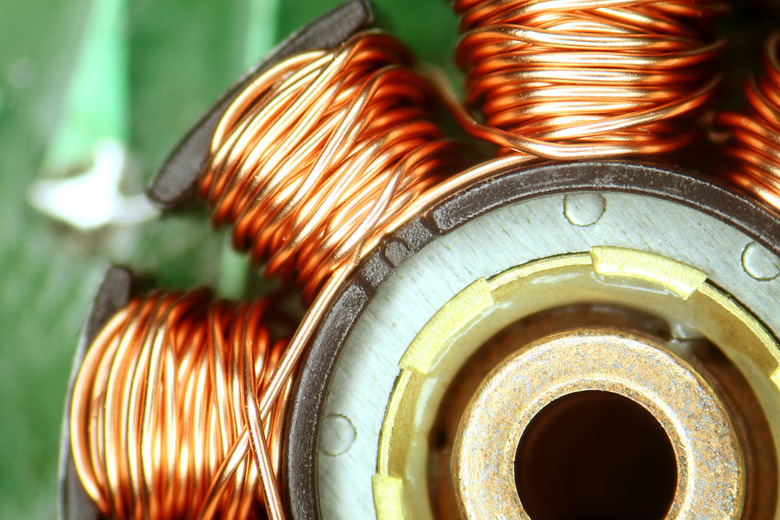How To Calculate Electrical Winding Wires By Weight & Length
Electrical winding wire is used to create inductors. An inductor is a iron core with coils of wire wrapped around it. The number of turns of the coil wire determines the inductance value. Inductors are used in a variety of electrical devices including transformers and electric motors. In fact, the transformer ratio is the ratio between the primary winding and secondary winding where the word winding refer to coils of wire. For this reason, calculating electrical winding wire is analogous to calculating the value of the inductance associated with the winding.
Step 1
Find the radius of the wire coil or winding in meters. Refer to the manufacturer's specification regarding the winding or measure it with a micrometer from the center of the wire coil to the outer section of the coil. Call this value "r."
Step 2
Find the area of the winding using the formula A = pi * r^2 where pi is 3.1415. For example, if r is 1.5 meters:
A = 3.1415 * (1.5)(1.5) = 7.068 square meters.
Step 3
Find the number of wire turns and the length of the wire. This is the number of times the wire wraps around the iron core. Refer to manufacturer's specifications of the winding for these values. Call the number of turns N and the length l.
Step 4
Calculate the inductance associated with the winding using the formula L = (u0 * A * N^2)/l where u0 is the permeability of free space at 12.56 x 10^-7. If N is 100 turns, l is 6 meters and A is 7.069 square meters.
L = [(12.56 x 10^-7)(7.069)(100)(100)]/6 = 14.79 mH or millihenries.
Note: The combination of the area and the length in the formula takes into account the weight of the wire.
References
Cite This Article
MLA
Chestnut, Dwight. "How To Calculate Electrical Winding Wires By Weight & Length" sciencing.com, https://www.sciencing.com/how-8785428-calculate-winding-wires-weight-length/. 7 August 2017.
APA
Chestnut, Dwight. (2017, August 7). How To Calculate Electrical Winding Wires By Weight & Length. sciencing.com. Retrieved from https://www.sciencing.com/how-8785428-calculate-winding-wires-weight-length/
Chicago
Chestnut, Dwight. How To Calculate Electrical Winding Wires By Weight & Length last modified March 24, 2022. https://www.sciencing.com/how-8785428-calculate-winding-wires-weight-length/
